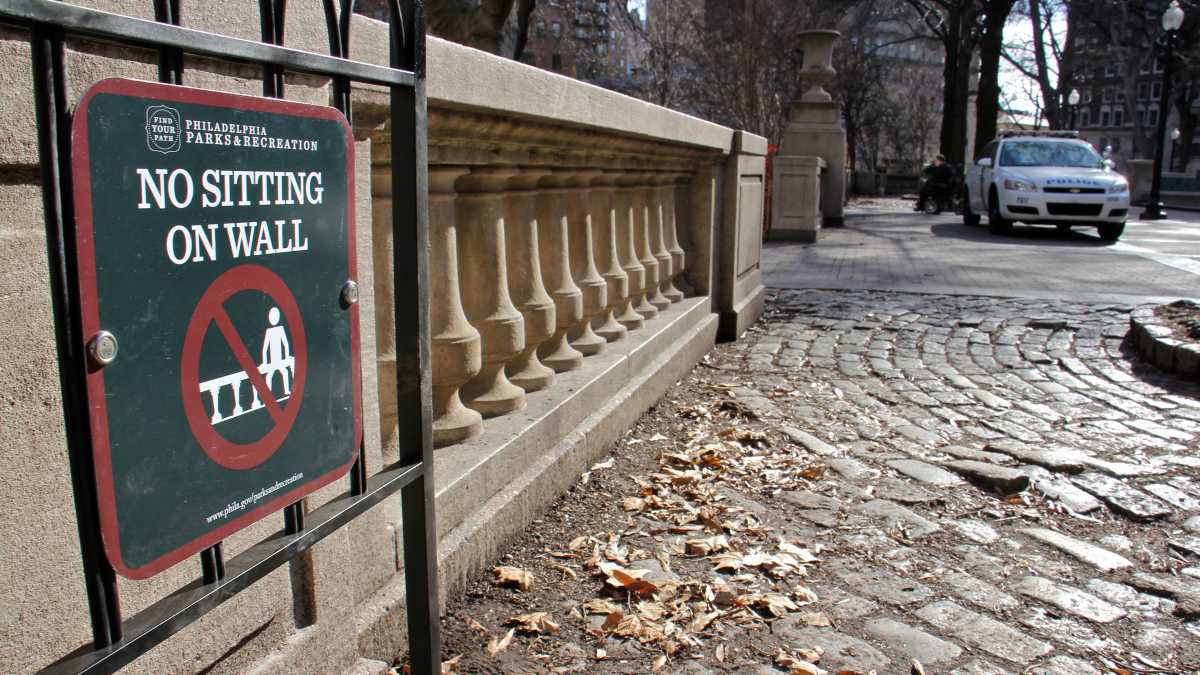January 17: Vision Zero tension | Sittenhouse | Recording lost buildings and the present

The objective of Vision Zero is to eliminate traffic-related fatalities and injuries through street design changes, education, and enforcement. Jason Laughlin lays out some of the frictions in the ongoing debate over how to ensure streets are safer for everyone involved. Bike lanes, for example, have been demonstrated to make streets safer for all users, but installing improved bike infrastructure has proven political and a bone of contention among some near-neighbors.
Sometimes a protest is over before it begins: Last Thursday, Parks and Rec officially prohibited sitting on the ballustrades inside Rittenhouse Square. Philadelphians pushed back immediately, defiantly perching, blasting on social media, and planning an official protests this week. But over the weekend Mayor Kenney declared via Twitter, ‘sit where you want,’ turning today’s scheduled protest into more of a celebration. Inga Saffron points out, however, unresolved issues remain: the signs are still up, guards are still enforcing the ban, and no word on just how long a police cruiser will stay idling inside the park.
Andrew Evans captures that eerie feeling of nostalgic heartache and fascination with Philadelphia’s changing streetscapes. Using transparent film, Photoshop and a sharpie, Andrew puts together haunting photos of Philadelphia’s lost buildings and the ones that replaced them. Hidden City shares Evans’ pictures and details of his process.
The Philadelphia Water Department determines stormwater fees based on how much impervious surface a property has. This should be good news for properties that utilize porous surfaces to absorb runoff. But for community gardens to take advantage of new stormwater fee exemptions, gardens must apply to the Water, Wastewater and Storm Water Rate Board for relief – it’s not automatic. Temple Community Garden is one example of the complexities of the billing.
Inga Saffron paid a visit to First Colored Wesley Methodist Church, the latest of Graduate Hospital’s many black churches to move. In rapidly changing neighborhoods, community institutions like black churches (and their prime parking spots) are being sold off, demolished, or replaced. Church moves aren’t uncommon and aren’t always cases of economic displacement. “But the web of neighborhood connections that gave Wesley its reason for being in this part of South Philadelphia is rapidly disappearing. In a sense, the neighborhood left Wesley.”
Want the best of PlanPhilly delivered to your inbox? Get our events roundup on Mondays and our news digest on Thursdays. Sign up today.
WHYY is your source for fact-based, in-depth journalism and information. As a nonprofit organization, we rely on financial support from readers like you. Please give today.






